Abstract
OBJECTIVE: To identify factors associated with the location of death (home or hospital) of patients referred to a palliative care home support team. DESIGN: Retrospective case-control chart review. SETTING: Palliative care inpatient unit with a home support team in a large chronic care hospital. SUBJECTS: All 75 patients receiving services from the home support team who died at home between June 1988 and January 1990 and 75 randomly selected patients receiving the same services who died in hospital. OUTCOME MEASURES: Place of death (home or hospital). RESULTS: Of the 267 patients referred to the palliative care home support team during the study period 75 (28.1%) died at home. Factors significantly associated with dying at home were the patient's preference for dying at home recorded at the time of the initial assessment (p < 0.001), a family member other than the spouse involved in the patient's care (p = 0.021) and the use of private shift nursing (p < 0.001). The patients who died in hospital were more likely than the other patients to have had no home visits from the palliative care team after the initial assessment (p = 0.04). The patient's preference for dying at home was not met if the caregiver could not cope or if symptoms were uncontrolled. The patient's preference for dying in hospital was not met if his or her condition deteriorated rapidly or if the patient died suddenly. CONCLUSIONS: Patients' preference as to place of death, level of caregiver support and entitlement to private shift nursing were significantly associated with patients' dying at home. The determination of these factors should be part of every palliative care assessment. Patients and their families should be informed about available home support services.
Full text
PDF
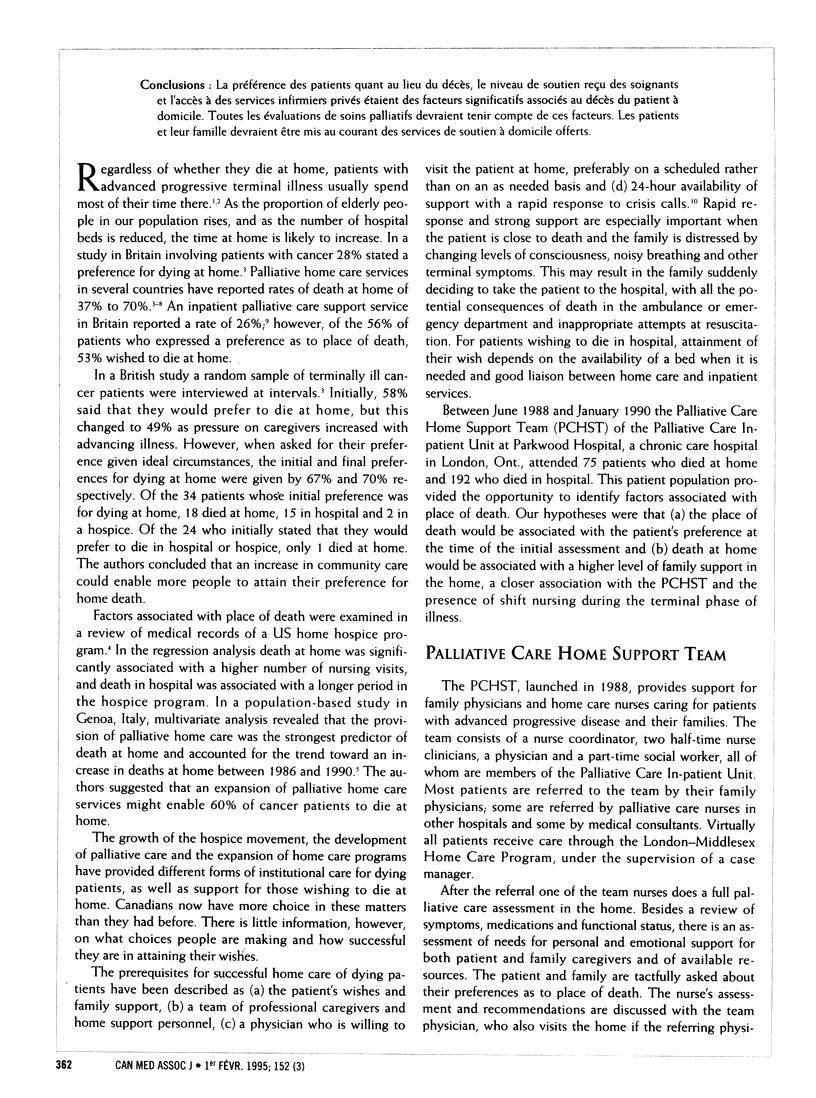
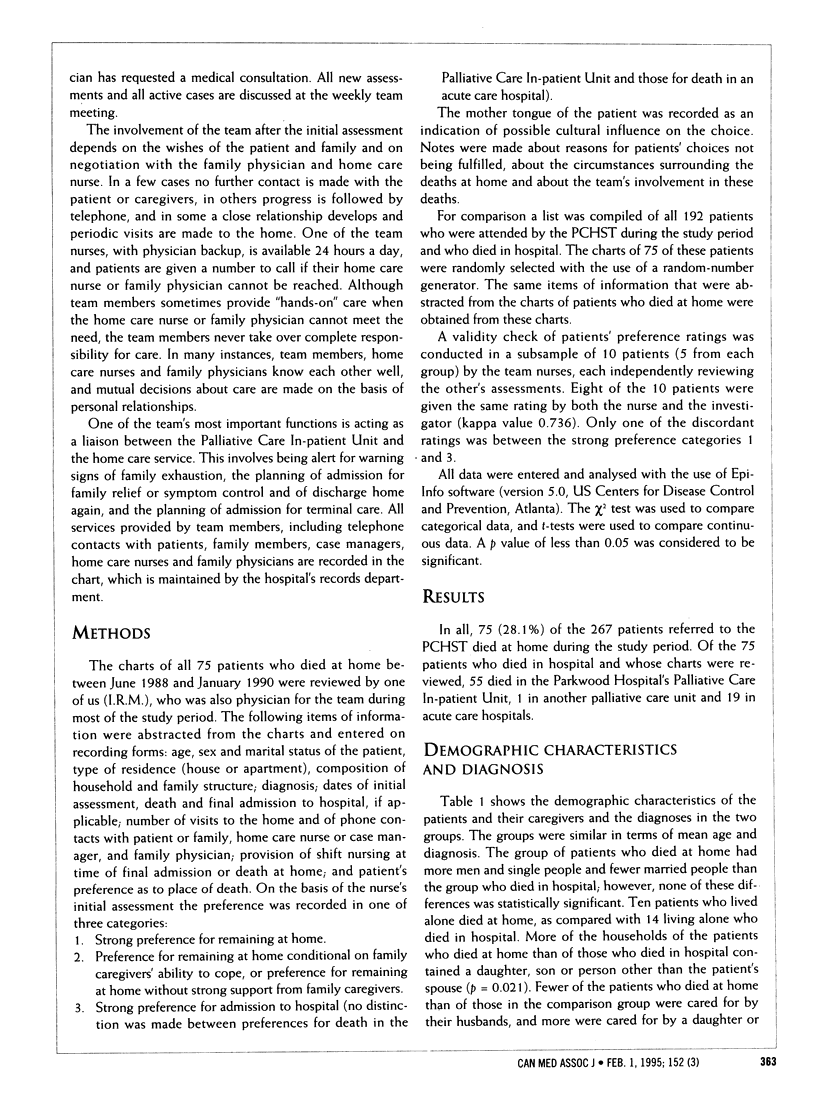

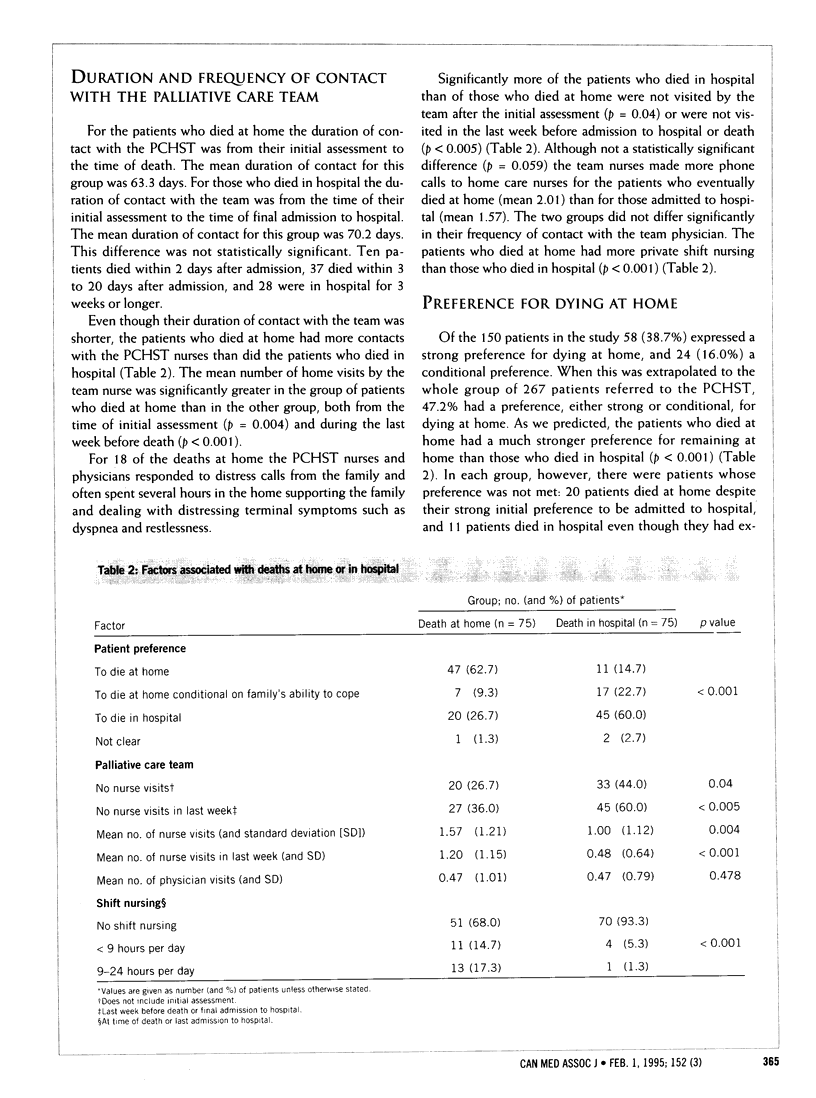
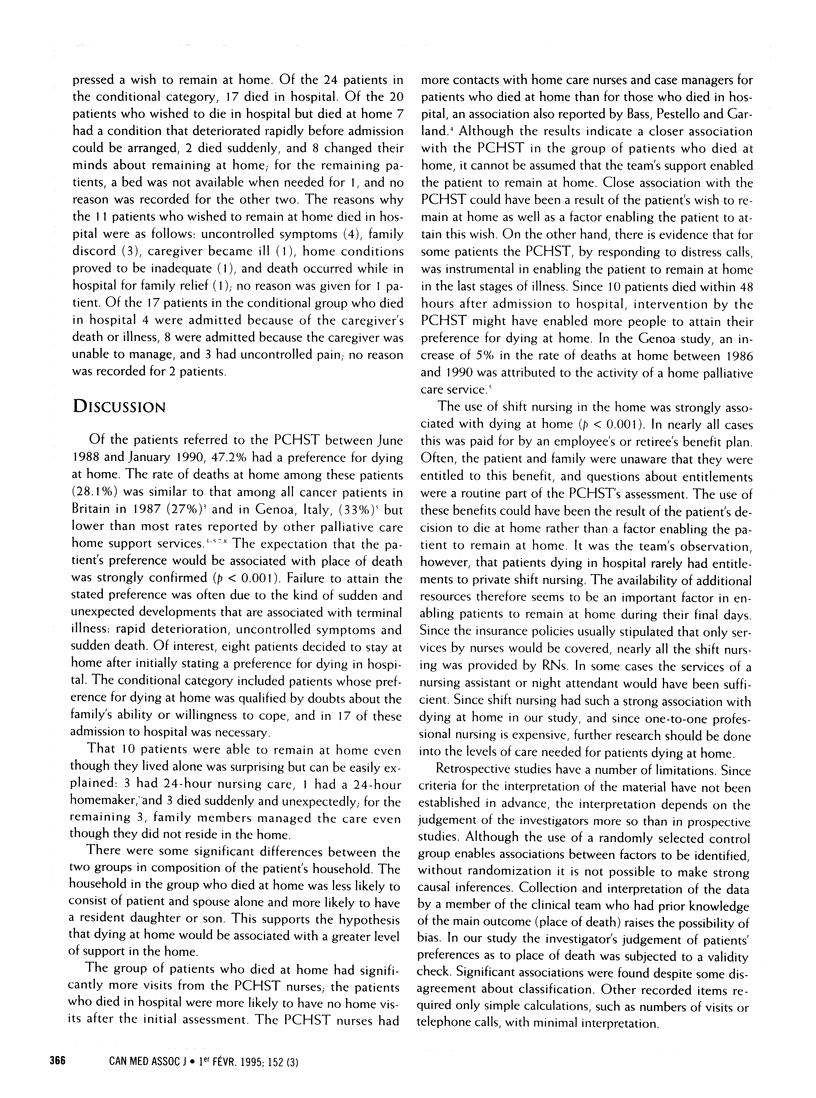
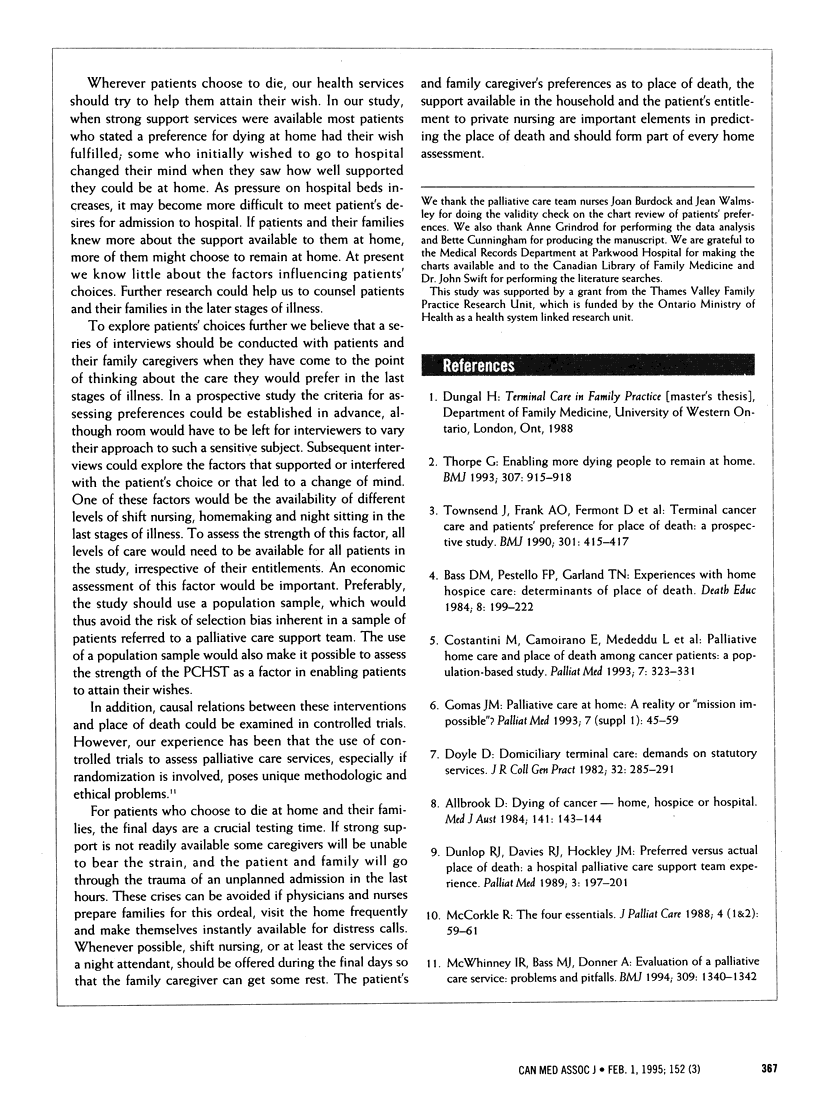
Selected References
These references are in PubMed. This may not be the complete list of references from this article.
- Allbrook D. Dying of cancer. Home, hospice or hospital? Med J Aust. 1984 Aug 4;141(3):143–144. doi: 10.5694/j.1326-5377.1984.tb113057.x. [DOI] [PubMed] [Google Scholar]
- Bass D. M., Pestello E. P., Garland T. N. Experiences with home hospice care: determinants of place of death. Death Educ. 1984 Winter;8(4):199–222. doi: 10.1080/07481188408252460. [DOI] [PubMed] [Google Scholar]
- Costantini M., Camoirano E., Madeddu L., Bruzzi P., Verganelli E., Henriquet F. Palliative home care and place of death among cancer patients: a population-based study. Palliat Med. 1993;7(4):323–331. doi: 10.1177/026921639300700410. [DOI] [PubMed] [Google Scholar]
- Doyle D. Domiciliary terminal care: demands on statutory services. J R Coll Gen Pract. 1982 May;32(238):285–291. [PMC free article] [PubMed] [Google Scholar]
- McCorkle R. The four essentials. J Palliat Care. 1988 May;4(1-2):59–61. [PubMed] [Google Scholar]
- McWhinney I. R., Bass M. J., Donner A. Evaluation of a palliative care service: problems and pitfalls. BMJ. 1994 Nov 19;309(6965):1340–1342. doi: 10.1136/bmj.309.6965.1340. [DOI] [PMC free article] [PubMed] [Google Scholar]
- Thorpe G. Enabling more dying people to remain at home. BMJ. 1993 Oct 9;307(6909):915–918. doi: 10.1136/bmj.307.6909.915. [DOI] [PMC free article] [PubMed] [Google Scholar]
- Townsend J., Frank A. O., Fermont D., Dyer S., Karran O., Walgrove A., Piper M. Terminal cancer care and patients' preference for place of death: a prospective study. BMJ. 1990 Sep 1;301(6749):415–417. doi: 10.1136/bmj.301.6749.415. [DOI] [PMC free article] [PubMed] [Google Scholar]


